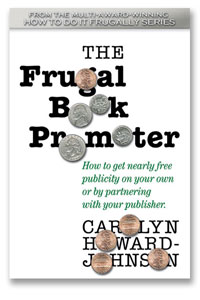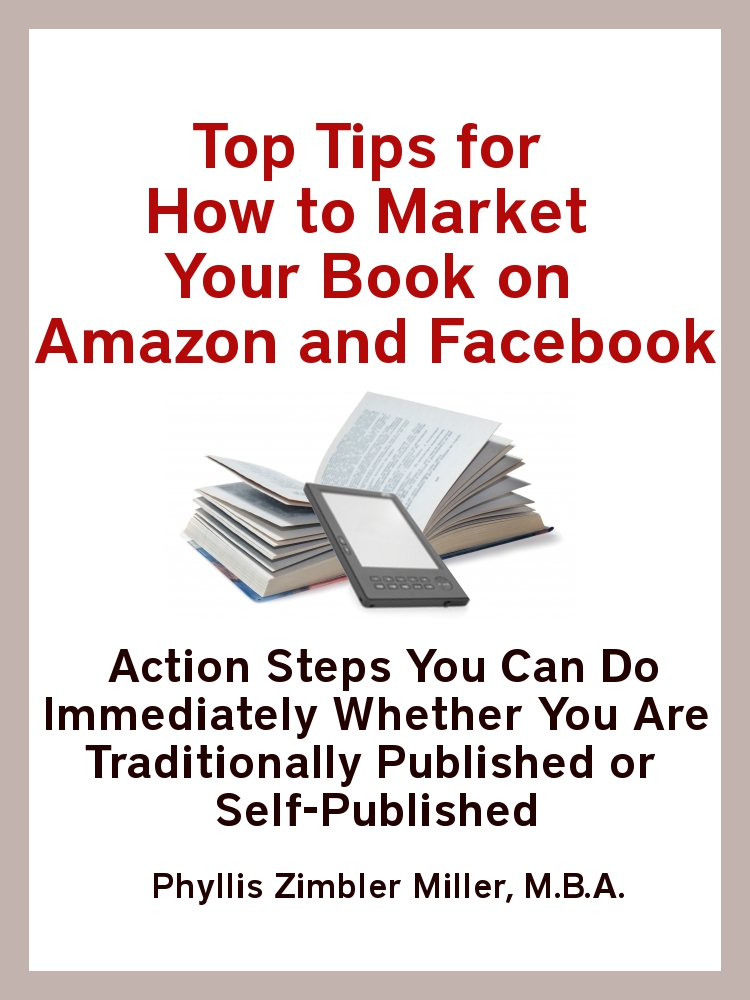Guest Expert: Joel Friedlander
My roots in publishing are firmly planted in the print world. Paper made from trees, books bound in boards covered with cloth, signatures sewn together with thread.
Books have always been–until recently–very solid physical objects. You can use them as weights, as doorstops, you can throw one (I don’t recommend it) at a noisy cat. Generations of people have used books as safes, or to press dried flowers between their pages.
So the transition to digital books has taken quite a leap for those of us tied to the idea that a book has pages, that it’s typeset in a specific typeface and all the other attributes of printed books.
But we’ve done it.
Now, authors who blog–and that should be most authors, don’t you think?–are faced with another leap, from words to pictures.
This is no small transition for most wordsmiths. Here is some information about getting started with video blogging that might help make the transition a little smoother.
Video Explodes Across the Web

More and more websites, including blogs, are using video to communicate, and it makes sense. Video is the preferred way for many people to take in information and training. Sites like Lynda.com and Khanacademy.org that provide video instruction are incredibly popular.
Many authors have already dipped a toe in the video waters by producing video trailers for their books to help in marketing and promotion. And people love video.
- It makes the author a more immediate presence, they become a real person when you see them on video.
- It allows authors to offer a much higher level of engagement with their readers and fans. People who will take time out of their day to watch a video are engaged.
- It makes it much easier to communicate visual information or instruction.
But “I” can’t do that!
Video production has been the province of corporations and media companies for a long time. Like book publishing, the tools of production and the skill needed to use them were clearly beyond the reach of individuals.
And just like book publishing, that picture has changed radically in the last couple of years and continues to change today, for two good reasons:
- Widespread availability of broadband internet access
- Cheaper, easier and more user-friendly hardware and software to produce good-looking videos
It may take another leap for an author to start to think of herself as a video personality, so it’s fine to go slowly with video.
And if you are horrified by the idea of appearing on camera, realize that you can create videos for your blog or website without having to show your face at all.
Kinds of Videos You can Make for your Blog
 There are three basic types of videos you can make, and each has strengths that you can use depending on what you’re trying to accomplish.
There are three basic types of videos you can make, and each has strengths that you can use depending on what you’re trying to accomplish.
- Full-motion video—A recording of you or others, just like a movie or TV show. This type of video is the best for building rapport with your audience, but it’s also the most challenging to learn to do well. It can be as simple as booting up the built-in webcam on your laptop and talking to it, or as complex as recording live interviews at a trade event or on a location.
- Screen capture—You record your computer screen and anything on it, adding your voice or music as audio. Screen capture is ideal for teaching with “over the shoulder” precision. Probably the most common instructional type of video, you can also put yourself into the video with the “picture in picture” capability of some software.
- Slide presentation—Another type of screen capture in which you create a slide presentation in Powerpoint or Keynote and record your voice or other audio as you go through the slides. This kind of video is commonly used in webinars, where the presenter is giving a complex talk or presenting sequential information.
What You’ll Need to Get Started
When I started doing videos for my blog I was concerned that it would cost a lot of money to get anything decent. And although I have ended up buying some software and equipment, you might be surprised how inexpensively you can start producing useful and rapport-building videos for your own reader communications.
At the absolute minimum you can actually create videos for almost no money at all using web-based Java recorders like Screencast-o-matic. If you have the Quicktime Player for Macintosh, check under the File menu and you’ll find an integrated screen recording feature there, too.
For editing, many people buy their Macintoshes with Apple’s iLife suite of programs already installed. This includes the useful iMovie application, which will give you video editing and export capabilities.
Let’s look at each of the three kinds of videos and what you might need to get going.
Full-motion video—This is going to be the most difficult and complicated to produce. At the easiest end, you can just use the built-in webcam on your computer and talk to it, creating a video no matter what software came with your computer.
But if you want to do anything more compacted you might need a separate HD camera, a tripod to hold it steady, some lights if you’re shooting indoors, a microphone to improve the audio, and some editing software to put it all together. This is probably not the best place to start if you’re unfamiliar with video.
Screen capture—On the Macintosh I’m using Screenflow, a terrific and easy to use program that also serves as a video editor. With Screenflow I can record anything happening on my screen and add an audio voiceover, sound from the computer. When you go to edit in Screenflow you can add special effects, arrows, highlights and other elements that help viewers follow along with your presentation. On the PC a similar program is Camtasia, although I haven’t used it.
Slide presentation—Many people are familiar with Microsoft PowerPoint, a standard for creating slide shows. I have a long aversion to this program and was delighted to find Keynote, which performs the same function for Macintosh owners, and which is much more pleasant to use.
Using Keynote you can easily put together slides with text, photos, illustrations or anything else you can drag and drop into the program. Keynote then allows you to play the show, adding your audio commentary as you flip through your slides, and will export your show as a movie for editing or upload.
Planning Is Important, Too
To get a video that’s short and to the point, that communicates well and doesn’t waste people’s time is going to require planning.
It may not be necessary to write an entire script for your video, you’ll be glad if you at least outline what you intend to cover, key points you don’t want to miss, places where you want to pick up a prop, or other actions you want to get in the right sequence.
Upload, Host, Share, Embed
![]() Once you’ve got your video in good shape, you can upload it to a free account on Youtube.com or other video hosting sites. (Keep in mind that Youtube has a 15-minute limit for videos until you’ve been posting there for a while.)
Once you’ve got your video in good shape, you can upload it to a free account on Youtube.com or other video hosting sites. (Keep in mind that Youtube has a 15-minute limit for videos until you’ve been posting there for a while.)
In the process you’ll be asked to fill out a short form about the video, and don’t forget to put your best keywords in the description field. Youtube.com is the second most-searched site on the internet after Google.com, so searches here are just as valuable as anywhere else. Include your blog address or other domain name, too, so people who find you on Youtube.com can link back to your site.
Once you have your video at a hosting site, you’ll be able to easily get the code to share the video on social media sites like Facebook, or the code to embed the video on your blog.
Using Different Video Styles
Of course, you can mix and match video styles, too. For instance, some of the instructional videos I’m working on right now for a new training program combine an introduction using full-motion video with instruction using screen capture.
Also, I’m going to admit that I’ve spent nothing on camera equipment, although I’m shooting pretty decent HD videos for this project. How? I’m using my iPhone4 mounted on a tripod. Since it has cameras that face both sides of the phone, I can set up my shots quite easily, since I can see the image while in front of the camera. When it’s time to shoot, I switch to the HD camera.
Video is penetrating many areas of the web, and for good reason. A chance to show another, more personal side of yourself to readers and fans, the power of visual instruction, and a public habituated to watching screens for just about any purpose ensure that video will continue to grow.
Why not get started today?
 Joel Friedlander is the proprietor of Marin Bookworks in San Rafael, California, a publishing services company where he’s helped launch many self-published authors. He blogs about book design, writing and self-publishing at www.TheBookDesigner.com. Joel is also the author of the newly-published A Self-Publisher’s Companion: Expert Advice for Authors Who Want to Publish.
Joel Friedlander is the proprietor of Marin Bookworks in San Rafael, California, a publishing services company where he’s helped launch many self-published authors. He blogs about book design, writing and self-publishing at www.TheBookDesigner.com. Joel is also the author of the newly-published A Self-Publisher’s Companion: Expert Advice for Authors Who Want to Publish.
Follow Joel on Twitter
Photo Credits: Wikimedia



